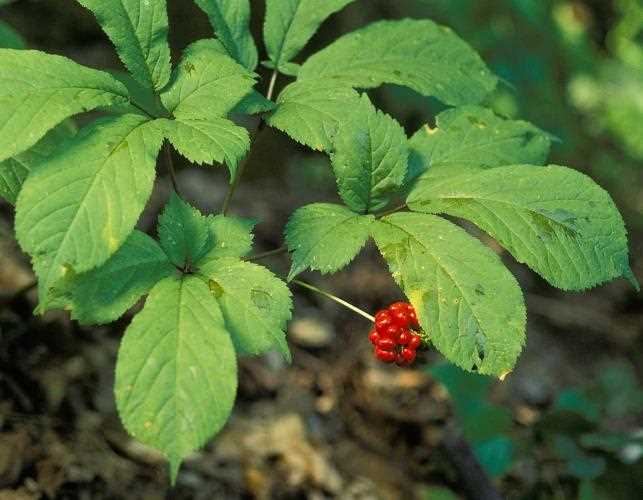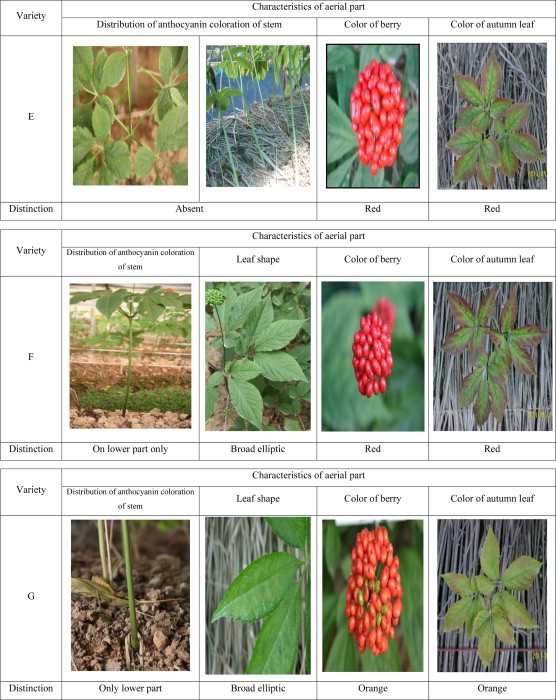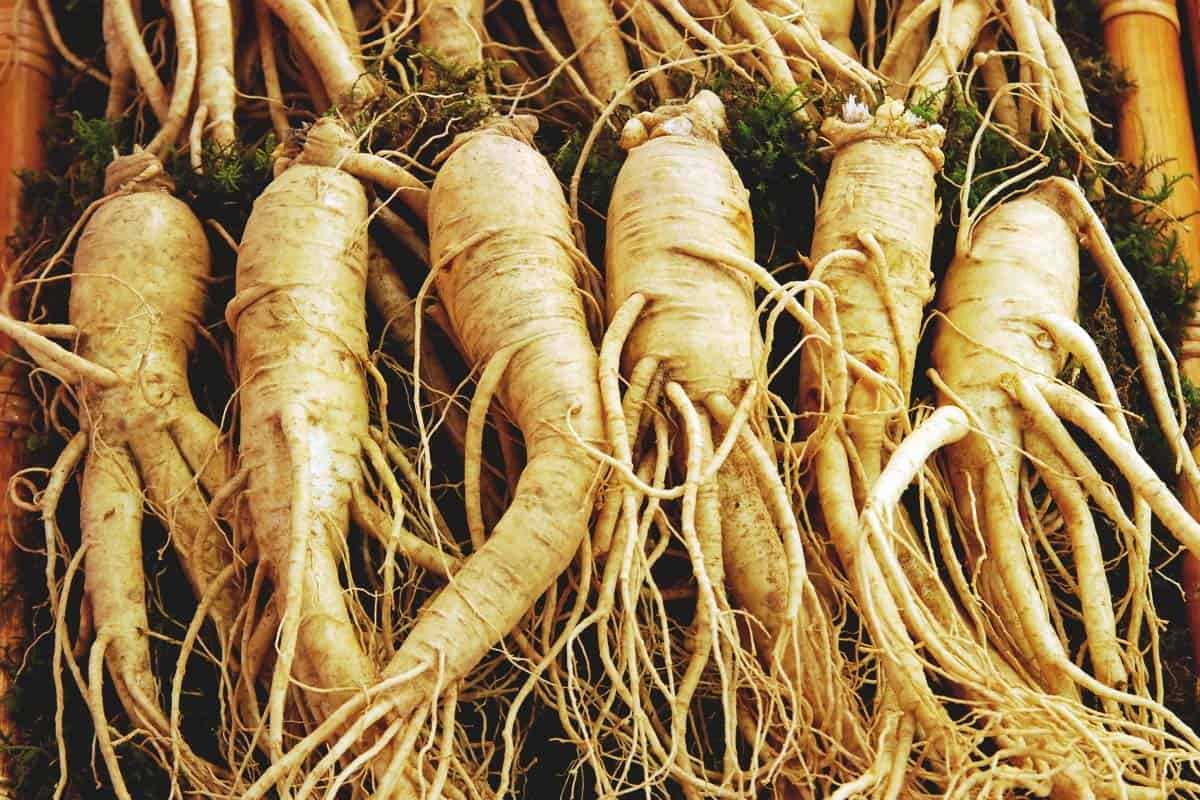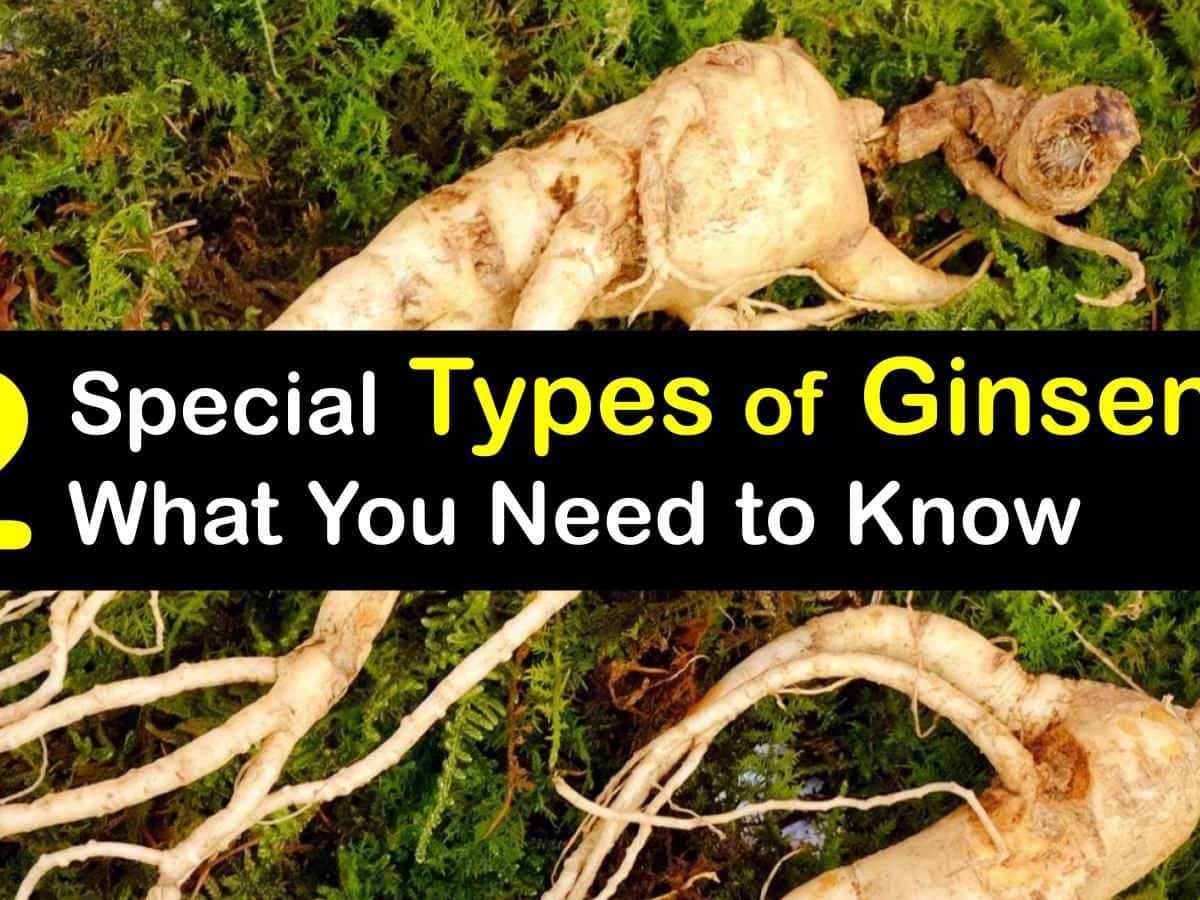- Ginseng Cultivation and Its Importance
- The Fascinating History of Ginseng
- Ginseng: A Valuable Medicinal Plant
- Health Benefits of Ginseng
- Types of Ginseng
- Growing Ginseng
- Growing Ginseng: A Lucrative and Rewarding Endeavor
- 1. Selecting the Right Site
- 2. Preparing the Soil
- 3. Sowing Ginseng Seeds
- 4. Providing Care and Maintenance
- 5. Harvesting and Marketing
- Understanding Different Ginseng Varieties
- American Ginseng (Panax quinquefolius)
- Asian Ginseng (Panax ginseng)
- Siberian Ginseng (Eleutherococcus senticosus)
- Red Ginseng
- White Ginseng
- Wild Ginseng
- Cultivated Ginseng
- Conclusion
- The Health Benefits of Consuming Ginseng
- 1. Boosting the immune system
- 2. Increasing energy levels
- 3. Enhancing cognitive function
- 4. Reducing stress and anxiety
- 5. Lowering blood sugar levels
- 6. Improving physical performance
- 7. Supporting heart health
- 8. Promoting anti-aging effects
- 9. Boosting sexual health
- How to Harvest and Process Ginseng
- 1. Timing
- 2. Digging
- 3. Sorting
- 4. Washing
- 5. Drying
- 6. Storage
- 7. Usage and Sale
- Tips for Successful Ginseng Cultivation
- Questions and Answers:
- What are the properties of ginseng?
- What are the different varieties of ginseng?
- How is ginseng cultivated?
- What are the health benefits of consuming ginseng?
- Can ginseng interact with medications?
- Videos: Some of the oldest ginseng plants I’ve found
Ginseng, known for its numerous health benefits and medicinal properties, has been cultivated and used for centuries in traditional medicine. This powerful herb is native to Asia, particularly Korea, China, and Siberian regions, but it is also grown in other parts of the world.
There are several varieties of ginseng, with the most popular being Panax ginseng (Asian ginseng), Panax quinquefolius (American ginseng), and Panax notoginseng (Chinese ginseng). Each variety has its own unique properties and benefits.
Ginseng cultivation requires specific growing conditions, including well-drained soil, shade, and a cool climate. It takes several years for the ginseng plant to fully mature and develop the medicinal compounds that give it its powerful properties.
The health benefits of ginseng are numerous. It is known to boost the immune system, enhance mental clarity and focus, improve energy levels, reduce stress and anxiety, and increase overall vitality. Research has also suggested that ginseng may have anti-inflammatory and antioxidant properties.
In this ultimate guide to ginseng, we will explore the cultivation process, the different varieties of ginseng, and their specific properties and benefits. Whether you are interested in growing your own ginseng or want to learn more about its medicinal uses, this guide will provide you with all the information you need to know.
Ginseng Cultivation and Its Importance
Ginseng cultivation is the process of growing ginseng plants for commercial use. It is an important practice as ginseng is a highly valued medicinal herb that has been used for centuries in traditional medicine.
The cultivation of ginseng involves several important steps. It begins with selecting the appropriate land and soil conditions for the plants to thrive. Ginseng requires well-drained soil with a high organic matter content. The pH level of the soil should be between 5.5 and 6.5. Proper shading is also necessary as ginseng plants prefer filtered sunlight.
Once the land and soil conditions are suitable, ginseng seeds are planted in an organized manner. The seeds are sown at a specific depth and spacing to ensure proper growth and development. After planting, the seeds are covered with a light layer of straw or mulch to protect them from extreme temperatures and maintain moisture levels.
Ginseng plants require consistent care and maintenance throughout their growth cycle. This includes regular watering, weeding, and pest control. The plants should be protected from various diseases and pests that can affect their health and productivity.
After several years of growth, the ginseng plants reach maturity and are ready for harvesting. The roots of the plants are carefully dug up and processed. Ginseng roots are known for their unique shape and medicinal properties.
The cultivation of ginseng is of great importance due to its numerous health benefits and economic value. Ginseng is widely used in traditional medicine for its potential to boost the immune system, improve cognitive function, and reduce stress. It is also used in various supplements, teas, and skincare products.
In addition, ginseng cultivation is an important source of income for many farmers and cultivators. The high demand for ginseng both locally and internationally makes it a profitable crop. However, ginseng cultivation requires expertise and patience as it takes several years for the plants to reach maturity and yield a significant harvest.
Overall, ginseng cultivation plays a crucial role in meeting the demand for this valuable medicinal herb. Through careful cultivation and proper management, ginseng growers contribute to the availability of high-quality ginseng products in the market.
The Fascinating History of Ginseng

Ginseng has a long and rich history that dates back thousands of years. It is believed to have originated in the mountains of East Asia, particularly in China and Korea. The plant has been highly valued for its medicinal properties and has played a significant role in traditional Chinese, Korean, and Native American medicine.
The use of ginseng can be traced back to as early as 5,000 years ago in ancient Chinese texts. It was referred to as “renshen,” which means “man-root” in Chinese, due to its human-like shape. Legend has it that ginseng was discovered by a Chinese emperor who noticed its unique shape and believed that it held the power to grant eternal youth and longevity.
Throughout history, ginseng was considered a rare and valuable plant, often reserved for emperors and the elite. It was highly sought after for its alleged health and vitality benefits. In ancient China, ginseng was used to treat a wide range of ailments, including fatigue, stress, and digestive issues.
In the 18th century, ginseng started gaining attention in the West when European explorers and traders encountered the plant during their travels to Asia. They soon learned about its reputation and began exporting ginseng to Europe. Its rarity and perceived medicinal properties made it highly prized among European nobility.
In North America, ginseng played a significant role in Native American medicine. Different tribes, such as the Ojibwe, Iroquois, and Cherokee, believed in the healing power of ginseng and used it to treat various ailments, such as headaches, fevers, and menstrual cramps. Native Americans also traded ginseng with European settlers, establishing a lucrative business.
Today, ginseng continues to be highly valued and cultivated around the world. It is widely used in traditional medicine and is also a popular ingredient in dietary supplements, energy drinks, and skincare products. The demand for ginseng has led to extensive cultivation efforts in countries like China, South Korea, and the United States.
Overall, the history of ginseng is a testament to its enduring popularity and the belief in its health benefits. Its rich cultural heritage and fascinating story make it a captivating plant worth exploring.
Ginseng: A Valuable Medicinal Plant
Ginseng is a highly prized medicinal plant known for its numerous health benefits. It has been widely used in traditional medicine for thousands of years and is considered an adaptogen, meaning it helps the body adapt to various stressors.
Health Benefits of Ginseng

- Boosts Energy: Ginseng is known for its ability to increase energy levels and combat fatigue. It is often used by athletes and individuals looking for a natural energy boost.
- Improves Cognitive Function: Research has shown that ginseng can enhance mental clarity, memory, and focus. It may also help reduce the risk of age-related cognitive decline.
- Supports the Immune System: Ginseng has immune-boosting properties and can help strengthen the body’s natural defense mechanisms.
- Reduces Stress and Anxiety: Ginseng is known to have calming effects and can help reduce stress and anxiety. It may also improve mood and promote a sense of well-being.
- Regulates Blood Sugar Levels: Some studies suggest that ginseng may help regulate blood sugar levels and improve insulin sensitivity, making it beneficial for individuals with diabetes.
- Enhances Sexual Health: Ginseng has long been used as an aphrodisiac and is believed to enhance sexual performance and increase libido in both men and women.
Types of Ginseng
There are several different varieties of ginseng, each with its own unique properties. The most commonly used types include:
- American Ginseng: This type of ginseng is native to North America and is often used for its cooling properties. It is known for its ability to nourish yin energy and reduce heat.
- Asian Ginseng: Asian ginseng, also known as Panax ginseng, is native to Asian countries like China and Korea. It is believed to have more warming properties and is often used for its invigorating effects.
- Siberian Ginseng: Siberian ginseng, also known as Eleutherococcus senticosus, is native to Russia and Siberia. It is not a true ginseng but is often referred to as such due to its similar properties.
Growing Ginseng
Ginseng cultivation requires specific growing conditions in order to thrive. It prefers well-drained soil with a pH level between 5.5 and 6.5. The plant grows best in shaded areas with high humidity and cool temperatures.
| Temperature | Humidity | Light |
|---|---|---|
| Cool (16-22°C) | High (65-70%) | Shade (70-80%) |
Ginseng seeds take several years to reach maturity, and the plant requires careful monitoring and care throughout its growth cycle.
In conclusion, ginseng is a valuable medicinal plant with numerous health benefits. From boosting energy to improving cognitive function, it offers a range of advantages. Understanding the different types of ginseng and its cultivation requirements can help individuals make informed choices when using this powerful herb.
Growing Ginseng: A Lucrative and Rewarding Endeavor
Ginseng cultivation has become an increasingly popular venture, thanks to the high demand for this medicinal herb. By learning the proper cultivation techniques and investing time and effort, growing ginseng can be a highly lucrative and rewarding endeavor. Here are some key steps to get started:
1. Selecting the Right Site
- Find a location with well-drained soil and partial shade. Ginseng thrives in moist, humus-rich soil.
- Test the soil pH to ensure it falls within the ideal range of 5.5 to 6.5.
- Ensure the site is free from weeds and has good air circulation.
2. Preparing the Soil
- Clear the site of any vegetation and remove rocks and debris.
- Amend the soil with organic matter, such as compost or well-rotted manure, to improve fertility and drainage.
- Till the soil to a depth of at least 8 to 10 inches to create a loose and well-aerated bed.
3. Sowing Ginseng Seeds
- Obtain high-quality ginseng seeds from a trusted supplier.
- Scarify the seeds by gently rubbing them with sandpaper or soaking them in water for a day to increase germination rates.
- Sow the seeds in the prepared bed at a spacing of 6 inches apart and cover them with a thin layer of soil.
4. Providing Care and Maintenance
- Keep the soil consistently moist but not waterlogged.
- Remove any weeds that may compete with the ginseng plants for nutrients and space.
- Protect the plants from direct sunlight by using shade cloth or natural shading.
- Apply a balanced fertilizer once or twice during the growing season to promote healthy growth.
5. Harvesting and Marketing
- Ginseng plants typically take 4 to 6 years to mature. Harvest the roots when they have reached the desired size and age.
- Wash and dry the roots carefully before selling them.
- Research the market demand and establish connections with potential buyers or consider selling online.
- Package the ginseng roots attractively and market them as a premium herbal product.
In conclusion, growing ginseng can be a profitable venture with the right knowledge and dedication. By following these steps, you can embark on a rewarding endeavor that offers both financial and personal satisfaction.
Understanding Different Ginseng Varieties
When it comes to ginseng, there are several different varieties that are commonly cultivated and used for their medicinal properties. Each variety has its own distinct characteristics and benefits. Here are some of the most popular varieties of ginseng:
American Ginseng (Panax quinquefolius)
American ginseng is native to North America, particularly the United States and Canada. It is known for its cooling and calming effects on the body and is often used to relieve stress and improve mental clarity. American ginseng is also believed to boost the immune system and promote overall well-being.
Asian Ginseng (Panax ginseng)
Asian ginseng, also known as Korean ginseng, is the most well-known and widely used type of ginseng. It is native to Northeast Asia, including China, Korea, and Siberia. Asian ginseng is known for its energizing and invigorating properties. It is commonly used to improve stamina, enhance cognitive function, and reduce fatigue. Asian ginseng is often prized for its ability to increase physical and mental performance.
Siberian Ginseng (Eleutherococcus senticosus)
Despite its name, Siberian ginseng is not a true ginseng. It is native to Russia, China, and Korea and is often referred to as eleuthero. Siberian ginseng is known for its adaptogenic properties, meaning it helps the body adapt to and cope with stress. It is often used to boost the immune system, increase energy levels, and improve overall vitality.
Red Ginseng
Red ginseng refers to any variety of ginseng that has been steamed and dried before processing. This process results in a ginseng root that is reddish-brown in color and has a distinct flavor. Red ginseng is believed to have enhanced medicinal properties compared to raw ginseng. It is often used to improve blood circulation, enhance sexual function, and boost the immune system.
White Ginseng

White ginseng is the unprocessed form of ginseng, which is dried but not steamed. It retains its natural color, typically a pale yellow. White ginseng is believed to have a milder effect compared to red ginseng. It is commonly used to improve mental function, promote relaxation, and support overall wellness.
Wild Ginseng

Wild ginseng refers to ginseng that is grown in its natural habitat without any cultivation or farming. It is highly valued for its potency and rarity. Wild ginseng is believed to have the highest concentration of active compounds and is often used for its powerful health benefits.
Cultivated Ginseng
Cultivated ginseng refers to ginseng that is grown under controlled conditions, such as in farms or gardens. It is the most commonly available form of ginseng and is often used for its medicinal properties. Cultivated ginseng is typically more affordable compared to wild ginseng.
Conclusion
Each variety of ginseng has its own unique properties and benefits. Whether you prefer American, Asian, Siberian, red, white, wild, or cultivated ginseng, incorporating ginseng into your wellness routine can provide a variety of health benefits. Consult with a healthcare professional to determine which variety of ginseng is best suited for your individual needs.
The Health Benefits of Consuming Ginseng
Ginseng is a popular herbal remedy that has been used for centuries in traditional medicine. It is believed to offer a wide range of health benefits when consumed regularly. Below are some of the potential health benefits associated with consuming ginseng:
1. Boosting the immune system
Ginseng is known for its immune-boosting properties. It can help to strengthen the immune system, making the body more resistant to infections and diseases.
2. Increasing energy levels
Ginseng is often used as a natural energy booster. It can help to improve physical and mental energy levels, making it a popular choice among those looking to increase their stamina and productivity.
3. Enhancing cognitive function
Research suggests that ginseng may have positive effects on cognitive function. It has been shown to improve memory, attention, and overall mental performance.
4. Reducing stress and anxiety
Ginseng has adaptogenic properties, meaning it can help the body better cope with stress. Regular consumption of ginseng may reduce feelings of anxiety and promote a sense of calmness and relaxation.
5. Lowering blood sugar levels
Some studies have found that ginseng may help to regulate blood sugar levels in individuals with diabetes. It may improve insulin sensitivity and reduce fasting blood glucose levels.
6. Improving physical performance
Athletes and fitness enthusiasts often use ginseng to enhance physical performance. It may improve endurance, reduce fatigue, and increase muscle strength.
7. Supporting heart health
Ginseng has been shown to have cardiovascular benefits. It may help to lower blood pressure, reduce cholesterol levels, and improve overall heart health.
8. Promoting anti-aging effects
Ginseng is rich in antioxidants, which can help to protect the body against free radicals and prevent oxidative damage. Regular consumption of ginseng may help slow down the aging process and promote healthier-looking skin.
9. Boosting sexual health
Ginseng has long been used as an aphrodisiac and natural remedy for various sexual health issues. It may improve libido, erectile function, and overall sexual performance.
It’s important to note that while ginseng offers many potential health benefits, individual results may vary. It’s always best to consult with a healthcare professional before starting any new herbal supplement.
How to Harvest and Process Ginseng
Ginseng is harvested for its root, which contains the medicinal properties that make it valuable. Harvesting ginseng involves a careful process to ensure the quality and potency of the root. Here are the steps to successfully harvest and process ginseng:
1. Timing
Ginseng is typically harvested in the autumn, when the berries are ripe. This is usually around September or October. It’s important to harvest ginseng at the right time to ensure it has reached its peak potency.
2. Digging
When harvesting ginseng, it’s essential to dig carefully to avoid damaging the root. Start by loosening the soil around the plant using a garden fork or small shovel. Gently lift the plant out of the ground, making sure to keep the root intact.
3. Sorting
After harvesting the ginseng, sort the roots based on their size and quality. Discard any damaged or diseased roots, as they will not have the same medicinal properties as healthy roots.
4. Washing
Once the roots are sorted, wash them thoroughly to remove any dirt or debris. Use a soft brush or sponge to gently clean the roots, being careful not to damage them.
5. Drying
Drying is a crucial step in the ginseng processing. Lay the washed roots on a clean, dry surface in a well-ventilated area. Allow the roots to air dry for several weeks until they become rigid and brittle.
6. Storage
Store the dried ginseng roots in a cool, dry place to preserve their potency. You can store them in airtight containers or paper bags to protect them from moisture and pests.
7. Usage and Sale
Once the ginseng roots are properly dried and stored, they can be used for various purposes. They can be brewed into tea, used as an ingredient in herbal remedies, or sold to buyers who value the medicinal properties of ginseng.
Remember, harvesting ginseng requires knowledge and expertise. It’s essential to familiarize yourself with local regulations and guidelines before harvesting ginseng to ensure sustainable and legal practices.
Tips for Successful Ginseng Cultivation
- Choose the Right Location: Ginseng plants prefer shaded areas with well-drained soil. Look for a location that provides partial shade, such as under a canopy of trees. The soil should be loamy and rich in organic matter.
- Prepare the Soil: Before planting ginseng seeds or seedlings, prepare the soil by removing any weeds or grass. Loosen the soil with a garden fork or tiller to a depth of at least 12 inches. Incorporate organic matter such as compost or leaf mulch to improve soil fertility.
- Plant Ginseng Seeds or Seedlings: Ginseng seeds should be planted in the fall, ideally in September or October. Sow the seeds about 1 inch apart and cover them with a thin layer of soil. If you’re planting seedlings, space them about 6 inches apart. Keep the soil moist but not waterlogged.
- Provide Adequate Water: Ginseng plants require consistent moisture, especially during the first year of growth. Water them regularly, aiming for evenly moist soil. Mulching around the plants can help retain moisture and suppress weed growth.
- Protect from Wildlife: Ginseng is often targeted by animals such as deer and rodents. Protect your plants by installing a fence or using netting. Regularly inspect the plants for any signs of damage and take necessary measures to deter wildlife.
- Manage Weeds: Keep the area around the ginseng plants free of weeds. Weeds can compete for nutrients and moisture, hindering the growth of ginseng. Regularly remove any weeds manually or use organic weed control methods.
- Monitor for Pests and Diseases: Keep an eye out for common pests and diseases that may affect ginseng, such as aphids, root rot, or powdery mildew. If you notice any signs of infestation or disease, take appropriate measures to control and prevent further spread.
- Harvest at the Right Time: Ginseng roots are typically harvested after 5 to 6 years of growth. Wait until the plants have reached maturity before harvesting. Carefully dig out the roots using a garden fork or shovel and clean them gently to remove any soil.
- Store Ginseng Properly: After harvesting, dry the ginseng roots in a well-ventilated area away from direct sunlight. Once dried, store the roots in a cool and dark place in airtight containers. Proper storage conditions can help preserve the medicinal properties of ginseng.
Remember, ginseng cultivation requires careful attention to detail and patience. Follow these tips to improve your chances of a successful ginseng harvest.
Questions and Answers:
What are the properties of ginseng?
Ginseng has numerous properties such as anti-inflammatory, antioxidant, and immune-boosting effects. It can also improve cognitive function, reduce fatigue, and enhance physical performance.
What are the different varieties of ginseng?
There are several varieties of ginseng, including American ginseng (Panax quinquefolius) and Asian ginseng (Panax ginseng). Other variations include Siberian ginseng (Eleutherococcus senticosus) and Indian ginseng (Withania somnifera).
How is ginseng cultivated?
Ginseng is typically grown in well-drained, sandy soil that is rich in organic matter. It requires a humid and shaded environment to thrive. The cultivation process involves careful planning of planting beds, sowing seeds or transplanting seedlings, and providing adequate moisture and nutrients to ensure proper growth.
What are the health benefits of consuming ginseng?
Consuming ginseng can provide several health benefits. It can enhance the immune system, improve mental performance, reduce stress and inflammation, boost energy levels, and promote overall well-being. Additionally, it may have anticancer properties and help manage diabetes.
Can ginseng interact with medications?
Yes, ginseng can interact with certain medications. It may interact with anticoagulants, antiplatelet drugs, and immunosuppressant medications. It is essential to consult with a healthcare professional before consuming ginseng if you are taking any medications.







